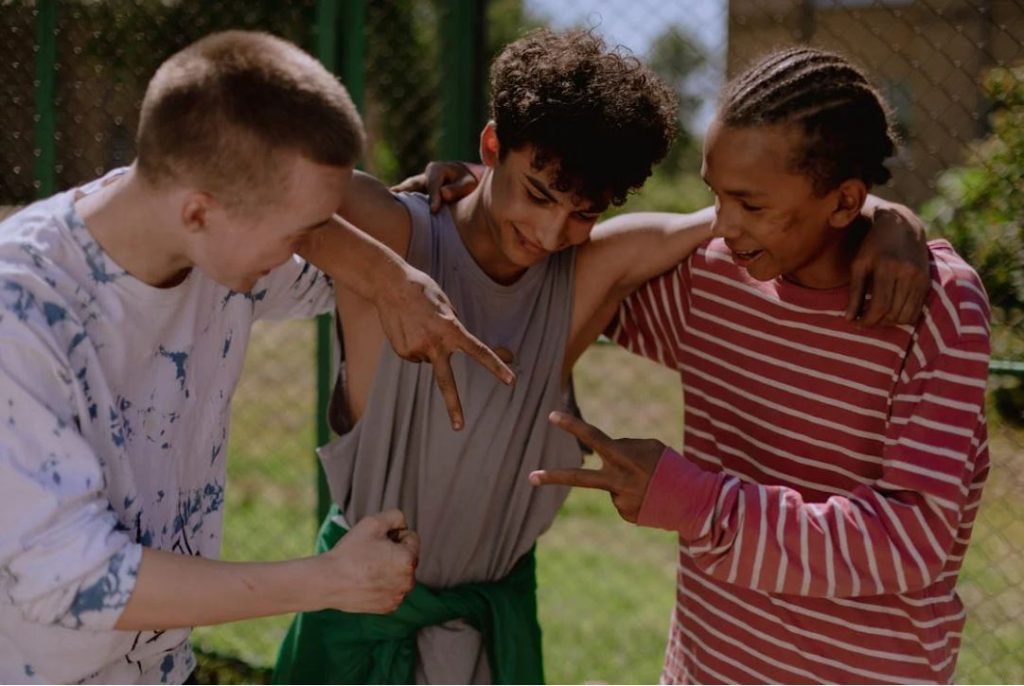Up and-coming belonging and youth research
Monika Marie Bergflødt
Read on and learn more about the exciting research of PhD candidate Monika Marie Bergflødt.
Place Attachment and Identity Exploration in Youth’s Everyday Lives

In recent years, there has been a surge in gendered narratives about boys and girls growing up in neighborhoods facing reputational challenges. The stories often revolve around minority communities and urban street cultures, attributing boys’ school struggles and involvement in crime and substance abuse to poverty, street culture and social stigma. Conversely, girls’ challenges are often seen in the context of patriarchal social control within minority communities (Rosten 2017; Smette et al, 2021; Sandberg & Pedersen, 2006). As scholars have shown, these narratives tend to oversimplify and obscure the intricate and constant evolving social realities of youth growing up today.
In my doctoral project, I seek to explore the ways in which boys and girls in stigmatized areas connect with people and places while navigating their identities in various social settings, both offline and online.

A phenomenological and ethnographic approach
To grasp various layers of boys’ and girls’ everyday lives, I will combine interviews with participatory methods and fieldwork in a phenomenological and ethnographic study.
Phenomenological research aims to provide in-depth descriptions of experiences rather than definitive answers. Merleau-Ponty (1963) and Simone de Beauvoir (1949) both view the body as intricately connected to broader social, cultural and historical contexts. They emphasize that our experiences and interactions within these contexts also shape our understanding of ourselves.
Until now, perspectives on embodied experiences have largely been overlooked in the debates about youth in so-called “troubled neighborhoods”. In my project, I seek to follow boys and girls in various aspects of their daily lives. By letting the participants lead the way and observing their interactions, I hope to capture the dynamic and embodied aspects of their social identities, gaining insights into how they understand themselves in different situations.
“At-risk youth” and “troubled neighborhoods”

As researchers, it is important that we critically examine the concepts and categories we employ and consider whether they truly reflect the experiences of those we study (Staunæs, 2003). In recent years, numerous empirical studies have delved into the experiences of youth in stigmatized neighborhoods, drawing on Loïc Wacquant’s theory of territorial stigmatization (Rosten, 2017; Jensen & Christensen, 2012; Sernhede, 2011; Andersson, 2003). These studies reveal that narratives surrounding growing up in the «wrong place,» as well as the ways in which boys and girls relate to and negotiate these spaces, shape different experiences based on gender. Additionally, young people often encounter labels related to ethnicity, religion, and culture, even when they don’t see them as personally significant (Kindt & Strand, 2020).
Labelling children and young people as «vulnerable» or «at-risk» extends beyond mere descriptions of their circumstances. These labels may also serve as mechanisms of power, shaping perceptions of and responses to them in society (Gullestad, 2006). Essentially, labels don’t just mirror reality; they actively shape it, often unfairly.
In my project, I hope to grasp how boys and girls not only are influenced by the gendered narratives that surround them, but also how they interpret and redefine these narratives in various contexts.

Digital platforms: new arenas for identity exploration
Being young today also involves growing up in an era where digital advancements have opened doors to new ways of self-expression and visibility, consequently making digital platforms significant arenas for identity exploration.
According to American sociologist Rogers Brubaker (2023), digital hyperconnection, as he refers to it, has changed how we relate to others and our sense of time and place. He suggests that living in a digital world, constantly connected to people and information, has not only changed how we see ourselves but also how others see us. However, Brubaker’s view is quite broad and impersonal. In my project, phenomenological and feminist perspectives may offer deeper and more nuanced insights into the complex dynamics unfolding in the lives of boys and girls living in situated yet “hyperconnected” digital lives.

About Monika
Monika Marie Bergflødt is a PhD Candidate in Social Sciences at OsloMet, affiliated with the Department for Childhood, Family and Child Welfare (NOVA). Bergflødt’s research interests encompass social inequality, childhood, and the sense of belonging within multicultural and digital societies.
References
Andersson, M. (2003). Immigrant youth and the dynamics of marginalization. Young, 11(1), 74–89.
Beauvoir, S. d. ([1949] 2000). Det annet kjønn. (Christensen, Overs.). Pax Forlag.
Brubaker, R.. (2023). Hyperconnectivity and Its Discontents. Cambridge: Polity Press.
Christensen, A.-D., & Siim, B. (2006). Fra køn til diversitet–intersektionalitet i en dansk/nordisk kontekst. Kvinder, køn & forskning(2-3).
Gullestad. (2006). Plausible prejudice: everyday experiences and social images of nation, culture and race. Universitetsforlaget.
Jensen, S. Q., & Christensen, A.-D. (2012). Territorial stigmatization and local belonging: A study of the Danish neighbourhood Aalborg East. City, 16(1-2), 74-92.
Kindt, M. T., & Strand, A. H. (2020). Hele mennesker–delte tjenester.
Merleau-Ponty, M. (1965). Phenomenology of perception. Routledge.
Rosten, M. G. (2017). Territoriell stigmatisering og gutter som «leker getto» i Groruddalen. Norsk sosiologisk tidsskrift, 1(1), 53-70.
Sandberg, S., & Pedersen, W. (2006). Gatekapital. Oslo: Universitetsforlaget.
Sernhede, O. (2011). School, youth culture and territorial stigmatization in Swedish metropolitan districts. Young, 19(2), 159-180.
Smette, I., Hyggen, C., & Bredal, A. (2021). Foreldrerestriksjoner blant minoritetsungdom: omfang og mønstre i og utenfor skolen. Tidsskrift for samfunnsforskning, 62(1), 5-26.
Staunæs, D. (2003). Where have all the subjects gone? Bringing together the concepts of intersectionality and subjectification. NORA: Nordic journal of women’s studies, 11(2), 101-110.